


xxxxxThe Scottish poet and novelist Walter Scott came to literary fame in 1803 by compiling a collection of Scottish ballads entitled Minstrelsy of the Scottish Border. He then went on to make a fortune by composing his own romantic narrative poems, beginning with his Lay of the Last Minstrel in 1805, and including Marmion, The Lady of the Lake and Lord of the Isles. From 1814 he concentrated on the writing of historical novels, and he met with equal success in this new genre. His first work, Waverley, proved extremely popular, and he followed this over the years with a series of stories which came to be known as the Waverley Novels. These included such well-
WALTER SCOTT (SIR) 1771 -
(G3a, G3b, G3c, G4, W4)
Acknowledgements
Scott: by the Scottish portrait painter Henry Raeburn (1756-
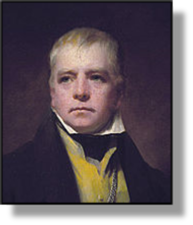 xxxxxThe Scottish poet and novelist Walter Scott was born into a middle-
xxxxxThe Scottish poet and novelist Walter Scott was born into a middle-
xxxxxAt the age of 25 he translated a number of German romances and then, putting together a three-
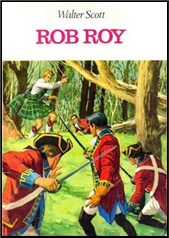
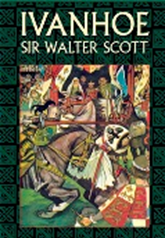 xxxxxIn 1814, however, he moved away from poetry and turned to prose fiction, partly it would seem because Byron’s verse romances were beginning to be so popular. For Scott this change of direction proved no less successful and far more productive. It was in that year that he produced his first historical novel Waverley, written around the Jacobite rebellion of 1745. This was a resounding success and, as it was written anonymously, it then gave its name to the long series of like novels that followed in quick succession. Over the next fifteen years, in fact, he wrote 20 adventure stories, some with different settings, but all with their own subjects and characters. In the first five years, these included Guy Mannering, Old Mortality, Rob Roy, The Heart of Midlothian, and The Bride of Lammermoor. Then in the 1820s came such works as Ivanhoe, Kenilworth, Quentin Durward, The Talisman, and Woodstock. Until 1827 these works were published anonymously, but for many years their authorship had hardly been a well-
xxxxxIn 1814, however, he moved away from poetry and turned to prose fiction, partly it would seem because Byron’s verse romances were beginning to be so popular. For Scott this change of direction proved no less successful and far more productive. It was in that year that he produced his first historical novel Waverley, written around the Jacobite rebellion of 1745. This was a resounding success and, as it was written anonymously, it then gave its name to the long series of like novels that followed in quick succession. Over the next fifteen years, in fact, he wrote 20 adventure stories, some with different settings, but all with their own subjects and characters. In the first five years, these included Guy Mannering, Old Mortality, Rob Roy, The Heart of Midlothian, and The Bride of Lammermoor. Then in the 1820s came such works as Ivanhoe, Kenilworth, Quentin Durward, The Talisman, and Woodstock. Until 1827 these works were published anonymously, but for many years their authorship had hardly been a well-
xxxxxGiven the substantial income from these “Waverley Novels” Scott was able to convert his farmhouse, bought in 1811 and then called Carley Hole, into an imposing country house in the guise of a Gothic baronial mansion. Called Abbotsford, and situated beside the river Tweed in the Borders region, it was completed in 1825. It served as a valuable retreat, and the surrounding countryside was a major source of inspiration to him, but, lavishly furnished, it proved a heavy drain on his financial resources.
 xxxxxIt was in 1826 that his money problems caught up with him. For some ten years, in fact, his business enterprise, Ballantyne & Co., had been struggling to survive. The economic slump of that year brought about its collapse, bringing down the printing firm of James Ballantyne and the publishing house of Archibald Constable, in both of which Scott had a substantial share. His partners declared themselves bankrupt, and Scott was suddenly faced with financial disaster, left with a debt to creditors of something like £120,000. It is much to his own credit that he refused to accept bankruptcy as an option, or financial assistance from friends. Instead, he took up his pen at the age of 55, and set about meeting his liabilities. “This right hand, he said, “shall work it all off.”
xxxxxIt was in 1826 that his money problems caught up with him. For some ten years, in fact, his business enterprise, Ballantyne & Co., had been struggling to survive. The economic slump of that year brought about its collapse, bringing down the printing firm of James Ballantyne and the publishing house of Archibald Constable, in both of which Scott had a substantial share. His partners declared themselves bankrupt, and Scott was suddenly faced with financial disaster, left with a debt to creditors of something like £120,000. It is much to his own credit that he refused to accept bankruptcy as an option, or financial assistance from friends. Instead, he took up his pen at the age of 55, and set about meeting his liabilities. “This right hand, he said, “shall work it all off.”
xxxxxThere followed six frantic years in which he produced a flurry of works in an attempt to meet his debts, the quality of some of his writing suffering as a result. To this painful period belongs the completion of his Life of Napoleon Bonaparte, The Fair Maid of Perth, Tales of a Grandfather, Letters on Demonology and Witchcraft, and his novels Castle Dangerous and Count Robert of Paris. In 1831, worn out by his efforts, he took a cruise to Italy, but his health did not improve. On his return to Abbotsford the following year he suffered a nervous breakdown and, following a series of strokes, died in the September. He did not quite manage to wipe the slate clean in his lifetime, but, by 1847 all his outstanding debts had been met by the sale of copyrights.
xxxxxScott was a Romantic poet and novelist to whom we owe the creation of the historical novel in its true form. Whilst his verse romances were popular in his time, it is his vivid adventure stories, skilfully set within a variety of exciting historical periods, by which he is best remembered today. He was, first and foremost, a brilliant storyteller. His accomplished powers of description and clarity, his well-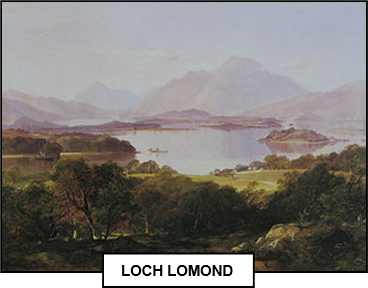 atmosphere and social texture of his chosen historical setting, be it from medieval times or from the recent past. Above all, he skilfully integrated his vast array of characters into the religious and/or political upheavals of their time, providing what was, in essence, a meaningful glimpse into some dramatic historical event or series of events. Some of his stories are realistically set in England or in France, but especially attractive are those played out against the landscape of his native Scotland, such as Waverley, Old Mortality and Rob Roy. Such works awakened a deep interest in Scotland and its history, heightened by the romantic appeal of its wild landscape and powerful traditions.
atmosphere and social texture of his chosen historical setting, be it from medieval times or from the recent past. Above all, he skilfully integrated his vast array of characters into the religious and/or political upheavals of their time, providing what was, in essence, a meaningful glimpse into some dramatic historical event or series of events. Some of his stories are realistically set in England or in France, but especially attractive are those played out against the landscape of his native Scotland, such as Waverley, Old Mortality and Rob Roy. Such works awakened a deep interest in Scotland and its history, heightened by the romantic appeal of its wild landscape and powerful traditions.
xxxxxHis poems and gothic romances earned him unprecedented popularity, a European reputation, and a prominent place in English romanticism, but Scott also took part in a wide range of other literary activities. For example, he contributed to the Edinburgh Review and the Quarterly Review, was founder and first president of the Bannatyne Club in Edinburgh -
xxxxxScott loved life and had a capacity for happiness. He enjoyed a contented married life, and prided himself on being a good father to his four children. And he found pleasure in entertaining guests and mixing with society in general. In 1821 he wrote to a colleague, “I have had many friends, few unfriends and, I think, no enemies. And I have had more fame and fortune than mere literature ever procured for a man before. I dwell among my own people and have many whose happiness is dependent on me and which I study to the best of my power.” However, his last seven years, having lost his wife and being burdened with financial problems, were not happy ones, as his Journal 1825-
xxxxxAs one would expect, Scott greatly influenced the works of contemporary and later writers in both Britain and abroad. Among those who followed in his literary footsteps were the American James Fenimore Cooper (often known as the “American Scott”), the French novelists Alexandre Dumas and Honoré de Balzac, the English writers Charles Dickens and William Makepeace Thackeray, and his fellow countryman, the adventure writer John Buchan -
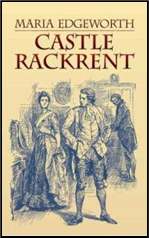 x
x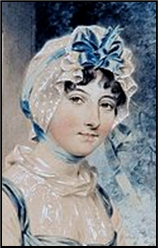 xxxxIncidentally, Scott was influenced in his historical novels by the writings of his friend, the Irish novelist Maria Edgeworth (1767-
xxxxIncidentally, Scott was influenced in his historical novels by the writings of his friend, the Irish novelist Maria Edgeworth (1767-
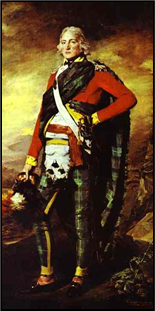 xxxxx…… Thexportrait of Scott above was by the talented Scottish artist Henry Raeburn (1756-
xxxxx…… Thexportrait of Scott above was by the talented Scottish artist Henry Raeburn (1756-
 xxxxx…… The little Dandie Dinmont terrier, noted for its long body and short legs, originated in the Scottish border country. Its name comes from the character in Scott’s Guy Mannering who trained this breed for hunting small animals.
xxxxx…… The little Dandie Dinmont terrier, noted for its long body and short legs, originated in the Scottish border country. Its name comes from the character in Scott’s Guy Mannering who trained this breed for hunting small animals.
Including:
Henry Raeburn
and James Hogg

G3c-
xxxxxAnother Scottish romantic poet and prose writer at this time was James Hogg (1770-
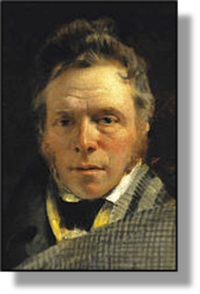 xxxxxAnother Scottish romantic poet and writer at this time, and one whom Scott assisted and encouraged, was James Hogg (1770-
xxxxxAnother Scottish romantic poet and writer at this time, and one whom Scott assisted and encouraged, was James Hogg (1770-
xxxxxOne of his most notable works, The Queen’s Wake, a collection of poems concerning Mary Stuart, was published six years later and this, together with such works as Queen Hynde and The Shepherd’s Calendar, both published in the 1820s, established his standing as a poet in the true Scottish folk tradition. His prose work included a terrifying work entitled The Private Memoirs and Confessions of a Justified Sinner, completed in 1824. A weird, macabre tale of the supernatural, it is the fictional autobiography of a mentally disturbed religious fanatic, and conjures up a frightening materialisation of the devil. As such it is regarded as a remarkable piece of Scottish fiction.
xxxxxIn 1816 Hogg produced his The Living Bards of Great Britain, a series of clever parodies on the major poets of his day, including Coleridge, Scott himself, and three he had met in Edinburgh some years earlier, Southey, Wordsworth and Byron. In 1834 he published one of his last works, The Domestic Manners and Private Life of Sir Walter Scott. He was a close friend of the Scottish poet Allan Cunningham.


